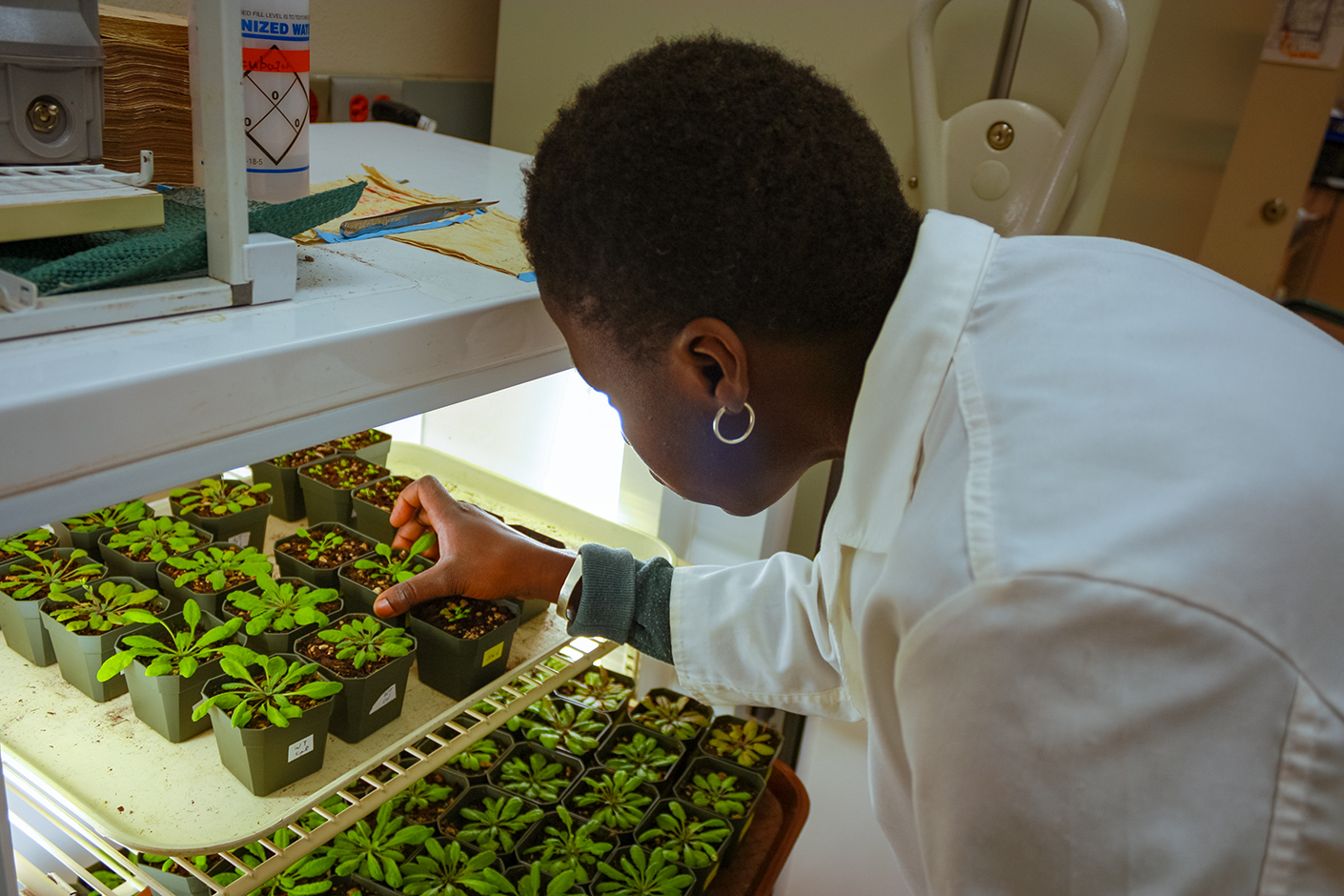Abstract : Seed dormancy is defined as the inability of viable seeds to germinate under conditionsotherwise favorable for germination. Dormancy provides a strategy for seeds to germinateat an appropriate time. Abscisic acid (ABA) is a major hormone involved in the regulationof seed dormancy. To elucidate the molecular mechanisms of dormancy, the twoexperimental systems, Gene Switch (GS), a chemically induced system and positivefeedback (PFB) system, a spontaneous system that does not require a chemical ligand,were created. Both systems were engineered to induce nine-cis-epoxycarotenoiddioxygenase (NCED), a rate-limiting enzyme of ABA biosynthesis. The GS systemincreased ABA levels in seeds more than 20 fold while PFB increases ABA more than 73fold, with both preventing imbibed seeds from germinating. To understand dormancymechanisms, the molecular consequences of NCED6 induction in the GS system wereinvestigated by RNA sequencing (RNA-seq). Many genes involved in ABA biosynthesisand signaling were identified. Other NCEDs, such as NCED5 and NCED9 and other ABAbiosynthesis genes, such as ZEAXANTHIN EPOXIDASE and ABSCISIC ALDEHYDEOXIDASE3, which function upstream and downstream of NCED, were upregulated inseeds by NCED6 induction. These results suggest that the distinct layers of PFB loops arecoordinately operating in the NCED6-induced seeds. In addition to known genes, manyuncharacterized genes including DELAY OF GERMINATION1 (DOG1)-LIKE-4 (DOGL4)and five long intergenic noncoding RNAs (lincRNAs) termed N6LINCRs were identifiedand characterized. DOGL4 shares only limited homology in amino acid sequence toDOG1, a major regulator of seed dormancy. Induction of DOGL4 alone in imbibed seedscaused expression of 70 seed maturation-specific genes, including those coding for themajor seed reserves, such as albumin, cruciferin, and oleosin, as well as sugar and lipidtransporters that are not affected by dog1-1 mutation. These results suggest that DOGL4 isa master regulator of reserve accumulation in seeds and has a distinct role from that ofDOG1. N6LINCR1, one of the lincRNAs identified by RNA-seq was preferentiallyexpressed from one strand and showed a clear response to ABA and gibberellin (GA) inseeds. RNA-seq analysis showed that induction of N6LINCR1 upregulated 26 genes anddownregulated 66 genes, suggesting that this lincRNA has a regulatory role in geneexpression in seeds, which potentially contributes to ABA regulation of germination.Besides their importance in basic research, the GS and PFB systems created in this thesisresearch provide efficient technologies, which can prevent preharvest sprouting (PHS),precocious germination in cereal crops. Moreover, DOGL4, a major seed maturationregulator identified by this study, also offers a great potential to increase protein and lipidcontents in grain crops and contribute to agricultural production and food security.
